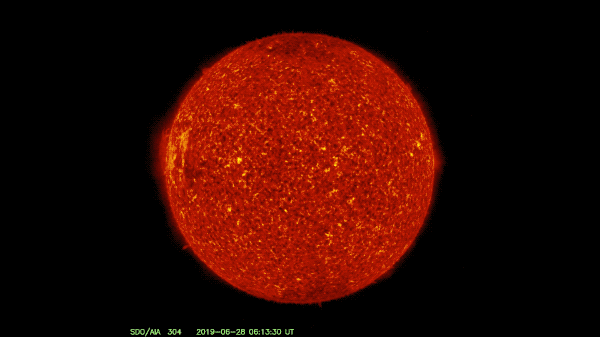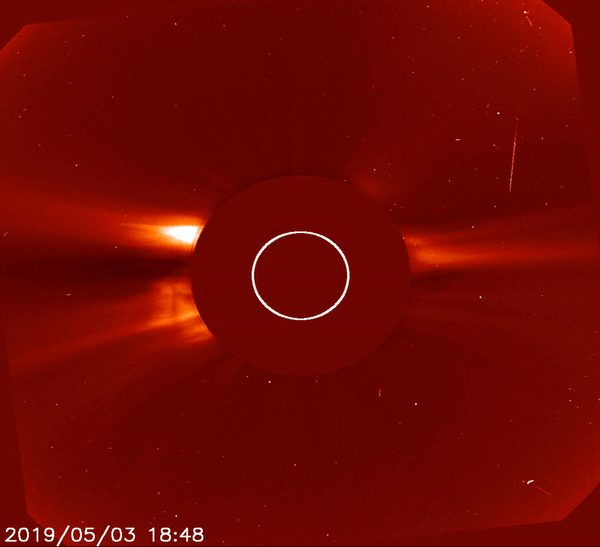By Miles Hatfield
NASA’s Goddard Space Flight Center
On Friday, June 28, NASA’s Solar Dynamics Observatory observed a solar prominence erupting off the limb, or edge, of the Sun.

Solar prominences are loops of comparatively cold, dense solar material that become suspended in the Sun’s super-hot outer atmosphere. Because they are colder and denser than their surroundings, they are readily observed by SDO’s 304 Angstrom telescope, shown here. This telescope captures light emitted by Helium atoms at about 90,000 degrees Fahrenheit. The temperature in the surrounding corona, the Sun’s outer atmosphere, can reach a few million degrees Fahrenheit.
Prominences, like most solar eruptions, form over active regions: places where the Sun’s magnetic field is especially intense and complex. Active regions can last for months, making several trips around the Sun (each complete solar rotation is known as a Carrington rotation, and takes about ~27 days). They are difficult to track unless the Sun is close to solar minimum and solar activity is low, as it is now. This active region is currently on its fifth Carrington rotation.
And it has been busy. Just before it began its third rotation in early May, this active region erupted with two back-to-back coronal mass ejections, or CMEs, that were captured by the NASA/ESA Solar and Heliospheric Observatory, or SOHO spacecraft. CMEs are explosions of hot solar material that shoot out from the Sun into space. They are best observed in coronagraph images, like the one shown below, which block out the light from the Sun’s bright surface to observe the dimmer surrounding corona.


